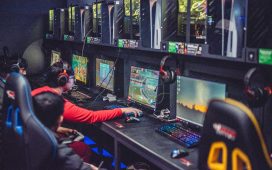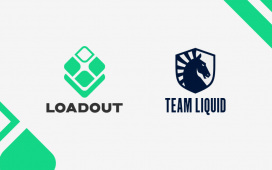In the rush to sign a roster to compete in Riot Games’ new first-person shooter, titled VALORANT, some organizations are reportedly signing players at exorbitant salaries to lock them into contracts. A virtual gold rush is on in the hopes of creating a lucrative investment opportunity. However, with only peripheral details available surrounding what a VALORANT esports ecosystem might look like, organizations signing Valorant rosters now could see large monetary losses in the future.
When 2019 Overwatch League MVP and 2019 Overwatch World Cup champion Jay “Sinatraa” Won announced his retirement from the San Francisco Shock to play VALORANT with the Sentinels, it sent shockwaves through the competitive Overwatch community. With rumors beginning to swirl that the 20-year-old Washington state native would be earning anywhere between $20K-$25K USD per month, some industry leaders advised caution.
Can confirm. Already hearing of offers north of $20k/mo.
Doesn’t seem logical or wise just yet. https://t.co/EEam5ydXkL
— Jason Lake (@JasonBWLake) April 28, 2020
Can confirm. Already hearing of offers north of $20k/mo.
Doesn’t seem logical or wise just yet. https://t.co/EEam5ydXkL
— Jason Lake (@JasonBWLake) April 28, 2020
And for good reason. They’ve seen this before.
When the 5-v-5 “hero shooter” Overwatch was released in May 2016, rumors of a franchised league and a path-to-pro ecosystem convinced esports organizations to go out and find and sign the best players they could. These signings were completed to not only to compete in the title, but also invest in the space. But as some organizations found out, there were some inherent risks involved.
By signing an Overwatch team roster, organizations had three avenues in which to get a return on the investment into the title. First, teams were looking to get into the franchised Overwatch League (OWL) where a revenue share through league sponsorships, streaming rights deals, jersey sales, and more could be lucrative over time. Second, teams that could not afford the $30M – $40M USD franchise fee could use buy-out clauses to transfer a player to one of the franchised teams for a price. Lastly, and not really feasible for new organizations, creating content around the roster could be monetized on platforms such as Twitch and YouTube.
As it stands, there are attributes of VALORANT that make it an attractive proposition for organizations to invest in. The game is not graphics intensive and can be played on medium-tier graphic cards. This allows the game to be played on more PCs than graphic-intensive games, meaning more players and markets will have access to the game. This was a major factor in the explosive popularity of Fortnite, which had similarly accessible technical requirements. There are no buzzwords associated with the game that make it unattractive to sponsors such as “bomb” or “terrorist” as found in Counter-Strike” Global Offensive.
Riot Games’ assurance that it will let the ecosystem grow organically for at least the first year is also a consideration as well as the possibility of moving to a franchise model down the road. This assurance by Riot Games will allow more players to participate in tournaments as the company has said it will license VALORANT to outside tournament organizers.
It is also easy to be sucked in by the record-shattering viewership Valorant has seen so far on Twitch, breaking 100 hours watched for the first two weeks, without taking into account just how severe the inflation on those numbers has been due to Twitch and Riot’s use of a viewer incentive program known as “drops”.
However, information is still scarce and that should be a concern. The lack of information can be costly for those making early investments.
When Overwatch teams signed players to contracts, they did so without knowing the timeline or buy-in costs associated with the then proposed franchise league. This caused more than a few problems for teams looking to invest in the title.
One of the problems was losing contractual control.

During the early rush to sign the best Overwatch players they could, organizations were either not aware or didn’t do their due diligence in understanding the OWL timeline in terms of when franchises would be selected and other important dates. Some esports organizations that formed teams and did not get into the OWL, lost contractual control of talented players with expensive buyout clauses. These players no longer under control were free agents and could sign with whichever team they chose.
In the case with North American esports franchise, eUnited, it released the entire roster that had been together from February – October 2017 because it was not selected for a franchise slot. Team Liquid did the same after making the decision that the franchise buy-in was too expensive.
First movers in the space are seeing opportunities to snatch up player talent early in this process. But due to so many unknowns at this early stage some organizations are waiting for more information before they jump into the space.














